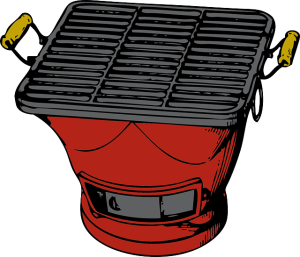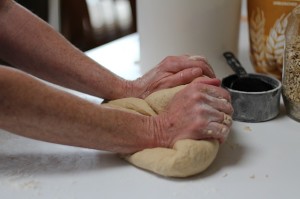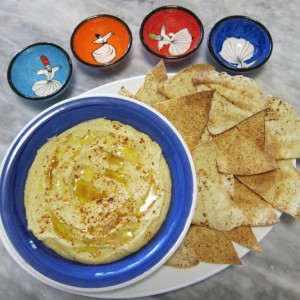I love to cook but I am sure many will agree that doing it for 365 days a year it can soon become a chore. But like it or not we all have to eat to keep going and the better the fuel we eat the better we can keep going.
 So whether you and your family are hoping to lose weight or are just trying to improve your overall health, the way you cook can mean the difference between you feeling energetic and getting the right kinds of nutrients or you feeling sluggish because you’re detouring away from your usual calorie and sugar-laden ways (that’s right…..your body takes time to adjust when you start eating clean food).
So whether you and your family are hoping to lose weight or are just trying to improve your overall health, the way you cook can mean the difference between you feeling energetic and getting the right kinds of nutrients or you feeling sluggish because you’re detouring away from your usual calorie and sugar-laden ways (that’s right…..your body takes time to adjust when you start eating clean food).
But there are many changes you can make to your diet that don’t have you feeling deprived. In fact, you may feel more sustained and satisfied than ever before once you implement these tips I have put together for you.
A lot of people worry and complain that healthy means bland and flavorless. This couldn’t be further from the truth. You just need to learn how to bring out the rich flavors of foods in their more natural state than masking it with unhealthy salts, sugars and processed sauces.
Here are six easy ways to improve the method you eat without having to deprive yourself of the foods you like. It’s just a few simple alterations and you will be seeing changes in your health stats and energy levels much quicker than you ever thought possible!
#1 – Choose the Right Cooking Methods
The actual methods you use to cook foods can play a big role in how healthy your meals are. Some people only focus on calories – never giving credence to healthier cooking options.
Let’s start with a big misconception people have about microwaving. Many people tend to view a microwave as unhealthy, but it’s primarily because of the typical foods we put in there – processed, quick and easy meals.
Of course those are not healthy for you! They’re packed with unrefined grains, fatty meats and sugars. But if you turned your microwave into a home for healthy vegetables, you’d see a whole new side of it.
Vegetables do best when they’re lightly cooked. A fast nuke in the microwave can heat up and gently soften your vegetables without you having to drain all of the nutrients from them with lengthy cooking methods.
Many things can be rapidly cooked in a microwave without having to use the same fattening oils (like butter) that you might put in a pan if you were to cook it on a stovetop instead.
The biggest problem with microwave cooking is that people don’t know how to cook more complex foods or meals in it. They only know how to melt chocolate or blow up a bag of popcorn – but now there are tons of books and even videos that teach you how to cook complete meals that are healthy for you in your microwave oven.
 Steaming is another great way to cook healthier. Gentle steaming preserves the nutrients of the foods that you’re cooking. Of course some people steam the foods to the point where they lose most of their vitamins and minerals, so timing is everything. Vegetables still should have some crunch so just a few minutes are all you need.
Steaming is another great way to cook healthier. Gentle steaming preserves the nutrients of the foods that you’re cooking. Of course some people steam the foods to the point where they lose most of their vitamins and minerals, so timing is everything. Vegetables still should have some crunch so just a few minutes are all you need.
When you steam foods, you won’t have the oils and fats that normally give foods flavour with other cooking methods. So you want to learn how to use herbs and seasonings (like lemon or lime juice) for a natural flavour punch that won’t sabotage your health. I often use a little drizzle of good quality virgin olive oil with a squeeze of lemon juice or white balsamic vinegar.
Baking is healthy if you choose the rights food to put into your oven. You can help foods retain their natural juices and flavour through the use of baking. You will lose some of the nutrients due to the lengthy heat required to thoroughly cook many foods, but you do get the benefit of not having to add fats to your foods while getting them to a “done” state. Lately I have gone back to using sealable oven bags for fish and chicken. Just pop them in the bag with some of your favourite herbs and spices, seal the bag and cook for 15 to 20 minutes at 180 degrees (C) for a fan forced oven. Beautiful…….well-cooked but still nice and juicy.
Grilling is fantastic for healthier eating too. Not only does your food cook without harmful fats, but the flavor grilling imparts on your food is absolutely amazing!
Invest in a good grill that won’t be so complex to use that you dread using it. Have something that’s easy to use and clean so you can use it constantly. They even have little indoor grills you can use to cook healthier these days! But just be careful of using too much heat. Charred meat is not good for you.
Boiling, frying and poaching decrease nutrients or can add fat to your meals in some cases. With boiling, you are cooking at such high heat levels that all of the benefits of the foods you’re eating get lost in the water so if you do use this method make sure you knock it back to a gentle simmer and don’t leave things like vegetables in the pot until they are limp and lifeless. About three to four minutes is good for most vegetables – they still should have a bit of crunch when you take them out.
Frying can be done in levels of healthy or totally unhealthy. You can cook in solid lard, which is obviously very unhealthy, or use better oils like virgin olive oil to fry, which is much healthier. Be aware though that olive oil does not have a very high burning point so just use a moderate to low heat.
Even poaching can sometimes drain foods of their nutrients, but it’s also healthy to cook some meats like salmon this way, so no cooking method is completely off limits – just learn how to maximize your meal quality.
The following tips can help with that aspect of it.
#2 – Cooking With Meat
Most people are not vegetarians or vegans, although it is a fast-growing segment of the population. You can certainly add meatless meals to your cooking plans once or twice a week and have a much healthier outcome – but some people like meat and want to continue consuming it, so you need to learn how to make it better for you.

First, start by choosing organic meats (or at least grass fed). You want meat that hasn’t been fed tons of hormones or grains that aren’t healthy for the animals. It’s also a humane issue for many people, but even if it’s not for you, focus on the fact that free-range animals which have been organically feed (or just straight grass fed) are much healthier for your body.
Organic does cost a little bit more than other cuts of meat, but if you’re looking at cost, think of the cost is has on your body, and even the future medical costs you’ll have due to poor choices. Size also counts – a piece of steak the size of the palm of your hand is plenty big enough. A 300gm piece of rump is big enough for two, not one. Fill the rest of your plate up with vegies is the way to go.
Once you find meats that are cut from animals raised in a good environment, choose better cuts of meat, like those that naturally have less fat on them. A filet mignon is going to be a healthy cut of steak, but remove the bacon wrapped around it before eating it.
Lean meats – meats that have less marbling – can still be packed with flavor and juices – you just have to learn how to cook it so that it retains that flavor without drying out.
Buying beef like hamburger mince is easy because it will be labeled with the percentage of fat. You may have always bought 80/20 so that it would be juicy, but start learning how to prepare the 95/5 packs instead.
If you’re buying chicken, look for skinless cuts rather than those with the skin on. If you’re on a budget, just remove the skin at home before cooking. Generally speaking, white meat is healthier than red meat.
In general, it’s best to put fish (but not deep fried in batter) at the top of your list instead of other meats. Chicken is next on the healthy scale, followed by beef and then pork. Of course there are ways to make all of these meats healthier, if you are prepared to give it a go.
The one thing I haven’t mentioned is slow cooking. Great for winter, cheap as you can use lesser cuts of meat, is healthy, nutritious and full of flavour and is so easy to do in a slow cooker while you are at work or out doing something else more important. I am not too keen on cold weather but I always look forward to meals made in my Tagine or crock pot.
#3 – Cooking With Fat
Fats are actually very good for you (well some are)! You shouldn’t be on a diet that eliminates fats completely. But there are good fats, and bad fats – and you want to cook with the healthier options.
You need to get rid of the everyday artery cloggers. If the fat is hard in its room temperature state, it’s not as healthy as a liquid one will be (although there is an exception here – virgin coconut oil solidifies at an ambient 25 degrees centigrade and liquefies as soon as it is heated). For example, olive oil (a liquid) is healthier than a stick of butter so understand that a little bit of fat goes a long way in terms of moistening your foods and in imparting flavour (but not if you are a French chef).
Select fats that aren’t packed with trans-fat or saturated fat. My preference is for virgin olive oil for low to medium temperature cooking and when I sometimes shallow fry something I use either grapeseed oil or rice bran oil. Don’t use fats from animals like lard and another really bad one is palm oil.
#4 – Cooking With Grains
When you eat grains, you might be thinking you’re eating healthier. But unless those grains are whole and in their natural state, not refined and processed, then they are much less healthy. To find more informative information and health benefits about whole grains check out this article from Whole Grains Council.

When shopping you should be looking for breads and beans that are still whole, not processed and stripped of their nutrients. It can be hard to get used to but try various types to find what suits your taste buds.
Also, in recent years there is a whole new slew of super grains out there – things you may not have ever tasted before like quinoa and chia seed. Google a few recipes and give them a go. Or, if you see it on a menu at a restaurant, give it a shot!
#5 – Cooking With Vegetables
I’ve mentioned this before, the less you cook your vegetables the better they are for you. Heat depletes them of their vitamins and minerals. So lightly steam or sauté and then eat them.

Better yet, eat them raw! There are many foods that taste great raw including baby spinach, turnips, cauliflower, broccoli, carrots, and plenty more. Better still, make a tub of hummus as a healthy dip for your vegie sticks……..what better lunch could you have? Quick to rustle up too.
#6 – Tweak Your Recipes for Improved Health
You probably have some favourite recipes lying around that are your “go to” meals for things like special occasions – or even everyday life! Look at how you can make each meal healthier and over time, you’ll cut back on a lot of calories, salt and other unhealthy ingredients.
Here are a few examples: if you are using flour, use whole wheat flour instead of plain flour or almond meal instead of flour; puree an avocado with a squeeze of lemon and use it instead of butter; use evaporated skim milk instead of cream; cacao nibs instead of chocolate chips; brown rice instead of white rice; swap Quinoa for couscous; polenta or rolled oats for bread crumbs; pita in place of bread; whole wheat bread instead of white bread and something I tried just recently was to use zucchini ribbons in place of pasta – delicious.
These are just a few ideas of how you can improve your cooking and diet with some simple and easy changes that you will hardly even notice but after a few months you will start to notice a reduction in your waistline and you will feel much better. It is all about consistent small changes over time and it works with very little effort.
And one last tip – get into the habit of using fresh seasoning that you develop to your own tastes rather than seasoning packets that stuff a whole bunch of salt and sugar in them. Fresh herbs are great and you can grow them yourself. Also try using different heat chilies (red peppers) for added flavour – they’re also a great way to kickstart your metabolism!
Leave a Reply